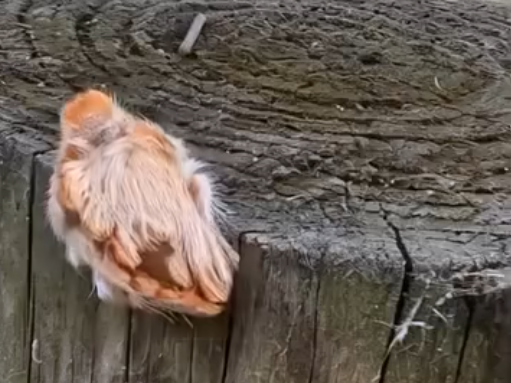was a warm, golden afternoon when Leslie Howe decided to take her baby and two other children to Gwinnett County Park for a bit of fresh air and sunshine. The park was alive with joyful energy—children’s laughter drifted through the air, birds sang from the trees, and a soft breeze stirred the leaves. While the kids played happily, something on a nearby bench suddenly caught their attention—a small, unusual creature, covered from head to tail in thick, silky fur.
At first glance, it seemed utterly harmless, even endearing. Its velvety coat made it look like a tiny stuffed animal or a gentle insect straight out of a children’s storybook. The children, drawn by curiosity, were tempted to reach out and touch it. But Leslie’s instincts as a mother took over. Something about it didn’t feel right. She quickly urged them to step back, keeping them safely out of reach.
Only later did she learn how close they had come to real danger. The “adorable” creature was no ordinary insect—it was a puss caterpillar (Megalopyge opercularis), the most venomous caterpillar in the United States. Leslie’s quick thinking may have spared her children hours of excruciating pain.
Beneath its deceptively soft fur lies a hidden arsenal of venomous spines. A single brush against the skin can release enough toxin to cause severe symptoms: intense, burning pain that can last for hours, accompanied by swelling, dizziness, nausea, profuse sweating, and in some cases, pain radiating through the body so strongly that movement becomes difficult.
These caterpillars are most commonly found in the southeastern United States, from Florida to North Carolina. They often appear in parks, playgrounds, backyards with trees and shrubs, and picnic areas—sometimes even falling from branches onto unsuspecting people below.
Children are especially vulnerable because of their natural curiosity. The puss caterpillar’s fuzzy, harmless look invites exactly the kind of touch that leads to its dangerous sting.
If stung, the most important thing is not to rub the affected area—this can drive the venom deeper into the skin. Instead, carefully remove any remaining hairs with adhesive tape, wash the area with soap and water, apply ice packs to reduce pain and swelling, take over-the-counter pain medication if needed, and seek medical attention if symptoms intensify.
Thanks to Leslie’s sharp instincts, what could have been a serious medical emergency became only a close call—and an important lesson. Her story serves as a reminder that in nature, appearances can be dangerously deceiving. Sometimes, the most hazardous creatures are the ones that look the most harmless.
